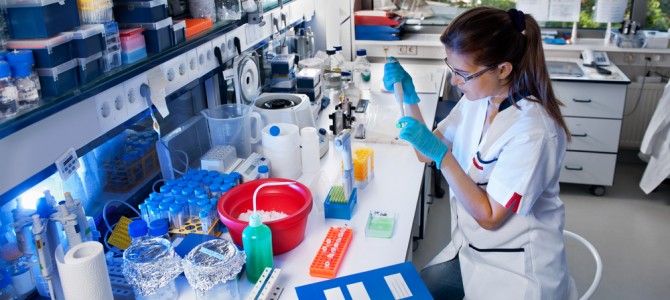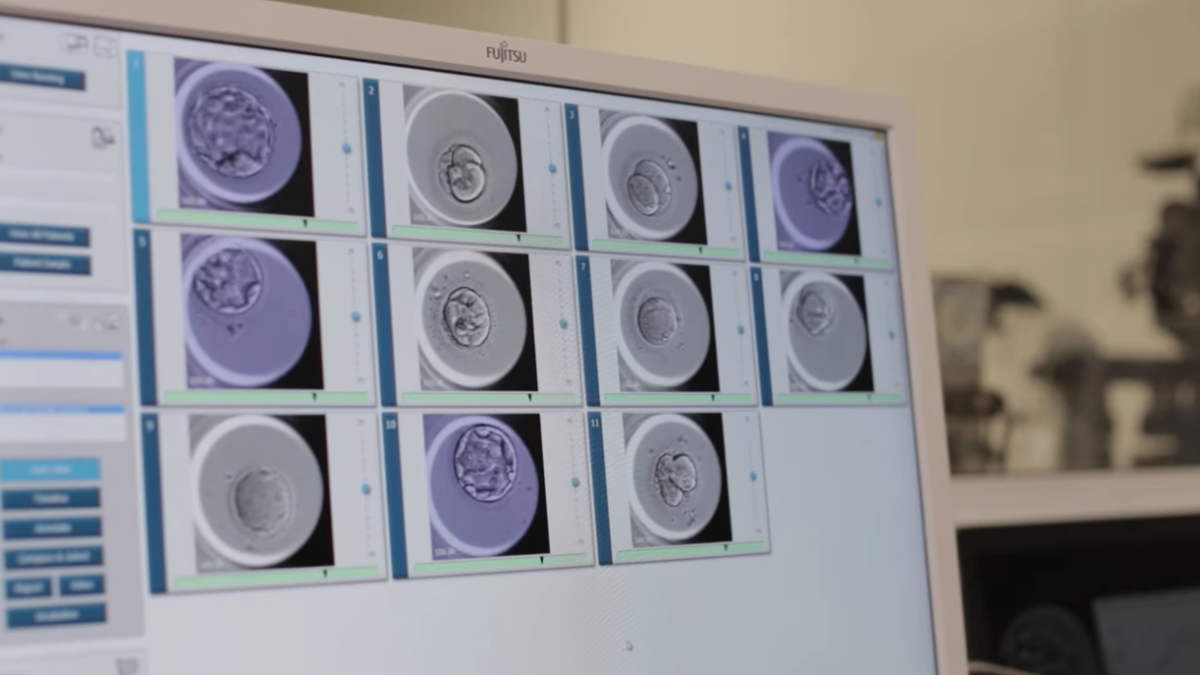
Numerous articles are attempting to defend Planned Parenthood’s grotesque child trafficking by saying these atrocities promote scientific research. A recent video shows Planned Parenthood Medical Director Deborah Nucatola revealing numerous problematic practices that require investigation to confirm that for-profit sale of human organs is not occurring, Planned Parenthood is providing appropriate informed consent to its patients, and abortion procedures are not being modified in any way to prioritize “obtaining the product” over patient safety and legal requirements.
Nucatola’s casual suggestion over wine and lunch that engaging in partial-birth abortions will yield a better harvest of organs from human babies is not something to simply dismiss with “but it will help science.” Over at Reason, Elizabeth Nolan Brown floats this trial balloon poorly.
Perhaps now is a good time to clear up a few of the untrue statements that are going around about this: No, Planned Parenthood doctors are not doing this without women’s consent. (See the consent form Planned Parenthood uses here.) No, Planned Parenthood affiliates are not profiting off aborted fetal tissue—the $30 to $100 Nucatola mentions in the video is what research firms typically reimburse clinics for the cost of storing, shipping, and transporting it. No, Planned Parenthood is not breaking federal law against selling human body parts (which would require, you know, actually selling them)…
As Vox’s Sarah Kliff points out, ‘fetal tissue has historically played an important role in scientific research because of fetal cells’ ability to rapidly divide and adapt to new environments. In the 1980s and 1990s, researchers had looked at fetal tissue transplants as a possible treatment for Parkinson’s disease and diabetes.’ Researchers also used fetal tissue in developing multiple vaccines, including the Rubella and polio vaccines.
Let’s break this down. Planned Parenthood’s consent form never mentions organ donation. It is woefully inadequate in providing appropriate context and understanding to patients so they can provide genuinely informed consent. The form does not ensure a clear understanding of what will happen to the baby in case of donation, nor does it indicate that the practitioner will use an ultrasound to alter how he or she destroys the baby. Fetal tissue and blood does not match Nucatola’s description of what body parts Planned Parenthood clinics exchange for money. She clearly describes “hearts,” “lungs,” and heads (using a medical term for this last one).
As the video and transcript show, Nucatola discusses using an ultrasound to change how she would crush and remove the baby in order to preserve organs an unnamed entity had requested. Second, it is unclear at best if Planned Parenthood is profiting off the organs Nucatola and the second whistleblower interviewee, Medical Directors Council President Mary Gatter, agree Planned Parenthood is exchanging for money. To prove Planned Parenthood isn’t profiting would require an extensive audit of their books, so again it’s unclear how Reason can know for sure. Further, the folks discussing this with Nucatola suggest ways their business can defray administrative costs by coming on site and self-shipping, over and above paying for children’s organs. It’s certainly worth investigating what money changed hands here.
We Don’t Need Abortions for Vaccines or Stem Cells
Lastly, we get to the “why are you so squeamish about killing babies and selling them for parts” argument (which to humane people may not even be an argument). Brown looks to Vox to try to “science up” the case. The implication is that we need more abortions to make vaccines that were developed 50 years ago. We don’t. According to the Centers for Disease Control and Prevention, “some vaccines such as rubella and varicella [were] made from human cell-line cultures, and some of these cell lines originated from aborted fetal tissue, obtained from legal abortions in the 1960s. No new fetal tissue is needed to produce cell lines to make these vaccines, now or in the future.”
The Reason article fails to mention that no further abortions are needed to produce vaccines. These cell lines that exist can be duplicated and grown as they are today. If you want to make the case that stem cells are where future discoveries are at, there is a plentiful source of non-controversial stem cells widely available without requiring a single abortion: the placenta. This organ is routinely discarded after the delivery of a healthy baby.
While it’s true that it does not contain pluripotent stem cells (ones that can develop into multiple types of cells but not new organisms), there are existing lines available for research. Further, because pluripotent stem cells from unborn babies are unprogrammed cells, scientists have found that they are harder to control and have proven less valuable in clinical work. In fact, more Parkinson’s improvements have been achieved with adult stem cells while fetal tissue-derived treatments resulted in severe neurological side effects, including tumor growth and worsening of symptoms.
If you are convinced that pluripotent stem cells are the key for future discovery, thankfully science has also found a way to produce these cells without aborting babies.
Two major scientific papers published this week in Science and Cell unveil a proven way to generate patient-matched pluripotent stem cells without human cloning, and without using human embryos or human or animal eggs. Research groups in Wisconsin and Japan have generated ‘induced pluripotent stem’ (iPS) cells with the properties of human embryonic stem cells by direct reprogramming of adult cells.
We Can Print Human Organs Instead of Harvesting Them
Meanwhile, over at the Washington Post, view another poor case for why we “need the liver” attempts to justify violating the National Institutes of Health Revitilization Act of 1993, which says “no alteration of the timing, method, or procedures used to terminate the pregnancy [may be] made solely for the purposes of obtaining the tissue.” As we saw from the second abortion sting video released July 21, Gatter says “she doesn’t want to get lowballed” and explicitly states that staff don’t have to do anything to get money for baby organs.

A main source the Washington Post article quotes is “Leinweber, president of the National Disease Research Interchange, a non-profit that receives some government support to connect tissue to researchers around the world.” Someone who’s main job is to connect tissue to researchers may not volunteer alternatives to tissue extracted live. Perhaps that’s why the Washington Post also fails to highlight that cells extracted live, or ex vivo, such as those being harvested from babies at Planned Parenthood, can only live for three to four days for testing compared to 3D bioprinted versions that can last up to 40 days.
The market has responded in multiple ways to the challenge of what the Post says is exploding demand for human tissue. Several companies, like Organovo, have built 3D liver models to supplement in vitro investigations. This approach can be undertaken without the ethical and supply challenges of prioritizing access to human tissue in babies so much that Planned Parenthood is now on record twice describing how they can alter procedures to obtain better “product.
The Post also posits that tissue research will speed drug development and reduce its cost. This is unlikely. First, tissue investigations are not considered “in vivo” results, so any potential new medicine will need animal and human in vivo studies, according to Food and Drug Administration regulations. While a human tissue experiment may yield yet another data point that may be replicated in a human subject, as stated above several companies are responding to the need to simulate human systems. This won’t necessarily speed up drug development as much as provide an alternative way to obtain data before the necessary studies of how a drug influences human subjects, which has its own associated costs.
The second way science is solving the supply challenge is through the use of immortalized cell lines.
In the field of hepatology, when orthotopic liver transplantation is not possible, human primary hepatocytes represent the ‘gold standard’, in particular for the establishment of bioartificial liver (BAL) support systems. They also serve as an important tool in research and are of particular interest for in vitro pharmaco-toxicology. Consequently, there is a considerable and increasing demand for human primary hepatocytes, yet their use is hampered by inadequate supply, high cost, high variability and low in vitroproliferation capacity. These constraints have prompted a large-scale search for alternative cell sources, such as hepatic cell lines and stem-cell derived hepatocytes. In contrast to primary cells, cell lines are readily available, and usually have an unlimited growth potential and high reproducibility. Hepatic cell lines are either derived directly from liver tumor tissue or artificially generated from primary hepatocytesin vitro.
Clearly, there are many legal ways to obtain human tissue now that do not require what is occurring at Planned Parenthood. Does this prescribe some limit on no-holds-barred scientific investigation? Yes, it does. So did limiting the use of prisoners for medical experiments. The reason society regulates research is to prevent morally reprehensible acts.
Science, like anything we choose to undertake, has to consider the ethical implications of research. It seems reasonable to hold the scientific use of human beings to the same standard that PETA does for rats and monkeys. If you have to ask yourself why we should value human life, you might be beyond reason.









